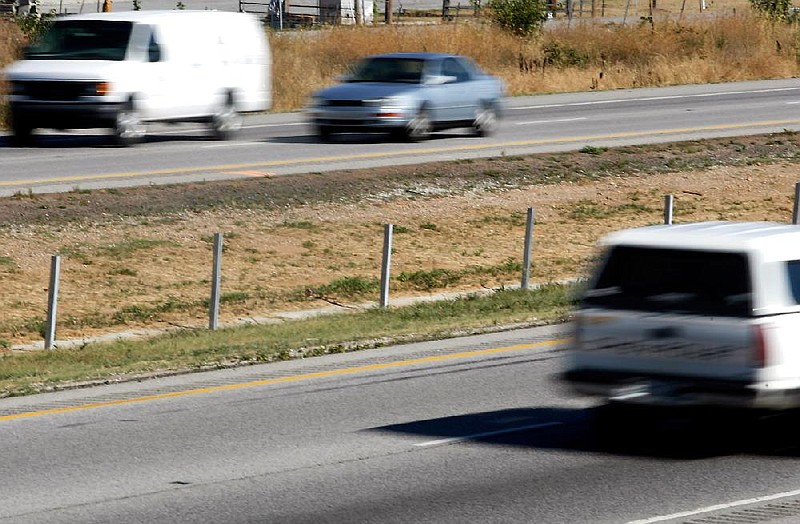LITTLE ROCK — Northwest Arkansas’ first highway-median cable barrier, designed to stop out-of control vehicles from crossing the median on Interstate 540 in Benton and Washington counties, started sprouting posts in the Rogers area last week.
It’s one of the last steps before workers begin attaching high-tension cables, said David Bushey, resident engineer for the Arkansas Highway and Transportation Department in Northwest Arkansas. The 25-mile safety project should wrap up by the end of the year, he said.
Until now, most of the work on the $4.97 million project between Rogers and Fayetteville has taken place at ground level. Motorists have had little to see except construction equipment and a new strip of pavement.
“It looks like we put a big sidewalk down the middle of the interstate,” Bushey said. “But we actually did a lot of foundation work, drainage structure modifications, grading and seeding. And there are now sockets in place to accept the line posts. Next we’ll run cable.
“You’ll see the finished product going up pretty quickly.”
The I-540 cable barrier system consists of a single line of posts at the middle of the median, strung with four, three-quarter-inch galvanized steel cables. The high tension cables are designed to block crossover vehicles, even if a few posts become damaged, Bushey said.
Cable barriers have become more popular along U.S. interstate highways since the 1990s. Arkansas motorists have asked for the barriers to keep highways safer, according to the highway department.
The cable barriers are built to be strong enough to stop vehicles, yet flexible enough to absorb a vehicle’s impact so the car or truck doesn’t bounce off and ricochet back into traffic, experts say. Cable barriers also are cheaper to install than concrete or steel barriers, Bushey said.
A 2008 study by the Texas Transportation Institute found the barriers improved highway safety.
Prior to 2003, “virtually all fatalities on interstate facilities [96 percent] were the result of cross-median crashes,” the report said. After cable barriers were installed, two safety evaluations showed cross-median fatalities had dropped more than 90 percent, according to the report.
Cable barriers already are in place along some highways in Arkansas, including the Little Rock area and north of West Memphis.
In Northwest Arkansas, work began last summer on the I-540 cable barrier that will stretch from Exit 86 in Rogers to Exit 60 near Fayetteville.
Construction started at the north end and has moved south.
When the project began, highway officials expected it would be finished by this summer. But Bushey said wet weather and soggy soil late last year slowed construction crews.
The project is more than 60 percent finished now and is considered on schedule and under budget, he said.
All of the work that has required lane shutdowns has been done at night, he said.
Arkansas, Pages 7 on 07/23/2012
